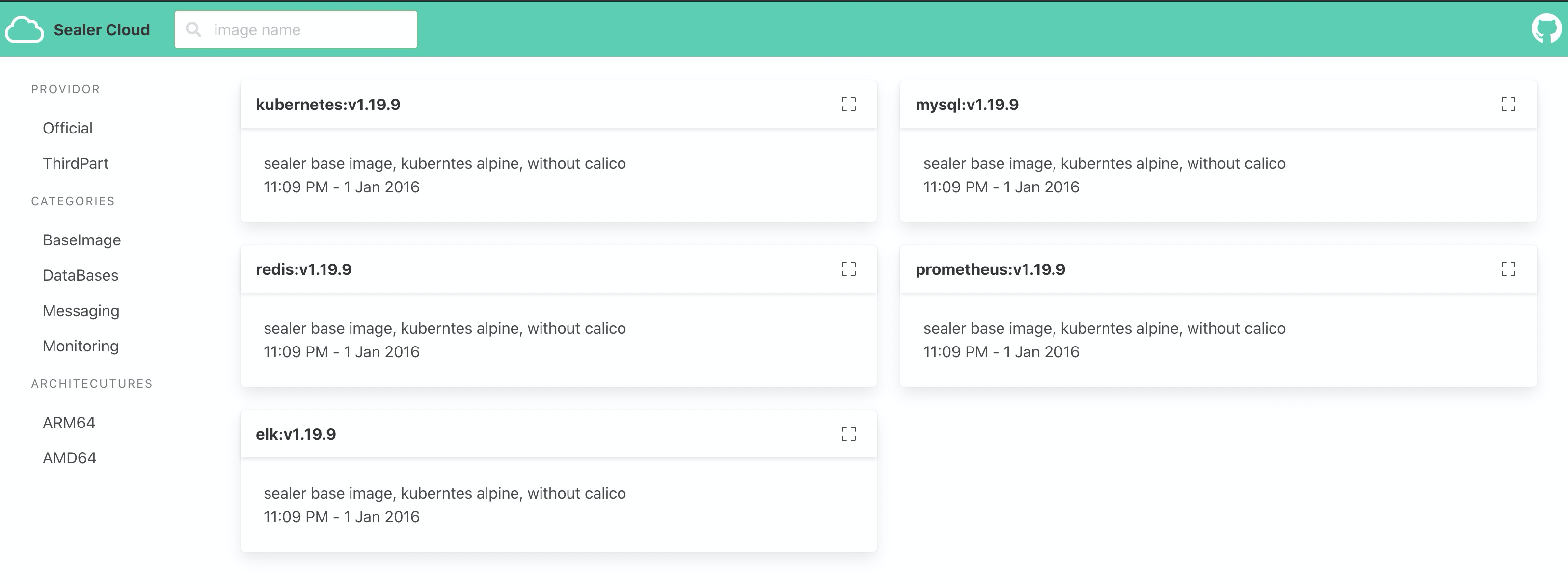rust+wasm写前端真香之嵌套与循环
[sealer]是阿里巴巴开源的基于kuberentes的集群镜像开源技术,可以把整个集群整体打包。
Sealer Cloud可以在线化帮助用户进行集群打包分享和运行,Sealer cloud前后端也使用了非常先进的
rust+wasm技术实现,本短文接上一篇继续讲一些代码结构,嵌套以及列表循环相关内容,让我们看下
rust有多优雅。
代码结构
[sealer源码]里面直接有具体的代码供参考。
当然有兴趣的同学可以参与到项目开发中来。
.
├── components
│ ├── footer.rs
│ ├── header.rs # UI的header
│ ├── image_info.rs
│ ├── image_list.rs # 主体内容,镜像列表
│ └── mod.rs
├── main.rs # 主函数
├── routes
│ ├── login.rs
│ └── mod.rs
├── services
│ ├── mod.rs
│ └── requests.rs
└── types
模块导入
使用函数让你的html更清晰
impl Component for Header {
...
fn view(&self) -> Html {
html! {
<nav class="navbar is-primary block" role="navigation" aria-label="main navigation">
{ self.logo_name() }
{ self.search() }
{ self.login() }
</nav>
}
}
}
我们一定要避免把很多html都写在一个代码块中,yew里面就可以通过函数的方式把它们进行切分。
impl Header {
fn logo_name(&self) -> Html {
html! {
<div class="navbar-brand">
<div class="navbar-item">
<i class="far fa-cloud fa-2x fa-pull-left"></i>
<strong> { "Sealer Cloud" }</strong>
</div>
</div>
}
}
...
}
这样看起来就很清晰,view函数里调用下面的一个个Html模块。
在main中调用header模块
我们在header中已经实现了一个Header的Component,首先在mod.rs中把模块暴露出去:
pub mod header;
pub mod image_list;
在main.rs中导入crate:
use crate::components::{header::Header, image_list::Images};
在main的主UI中导入header UI
通过
这样的方式即可fn view(&self) -> Html {
html! {
<div>
<Header />
<Images />
</div>
}
}
镜像列表List循环处理
先定义一个列表数组:
pub struct Image {
name: String,
body: String,
}
pub struct Images{
// props: Props,
images: Vec<Image>
}
在create函数中做一些初始化的事情:
fn create(props: Self::Properties, _: ComponentLink<Self>) -> Self {
Images{
images: vec![
Image {
name: String::from("kubernetes:v1.19.9"),
body: String::from("sealer base image, kuberntes alpine, without calico")
},
...]
在UI中进行循环迭代:
fn image_list(&self) -> Html {
html! {
<div class="columns is-multiline">
{
for self.images.iter().map(|image|{
self.image_info(image)
})
}
</div>
}
}
这里给map传入的是一个匿名函数,改函数返回单个镜像的详情。
单个镜像信息如下渲染:
fn image_info(&self,image: &Image) -> Html {
html! {
<div class="column is-6">
<div class="card">
<header class="card-header">
<p class="card-header-title">
{ image.name.to_string() }
</p>
<button class="card-header-icon" aria-label="more options">
<span class="icon">
<i class="fal fa-expand" aria-hidden="true"></i>
</span>
</button>
</header>
<div class="card-content">
<div class="content">
{ image.body.to_string() }
<br />
<time datetime="2016-1-1">{ "11:09 PM - 1 Jan 2016" }</time>
</div>
</div>
</div>
</div>
}
}
这样一个镜像列表就做好了,是不是非常简单。
看一下整体效果:
点击查看更多内容
为 TA 点赞
评论
共同学习,写下你的评论
评论加载中...
作者其他优质文章
正在加载中
感谢您的支持,我会继续努力的~
扫码打赏,你说多少就多少
赞赏金额会直接到老师账户
支付方式
打开微信扫一扫,即可进行扫码打赏哦






